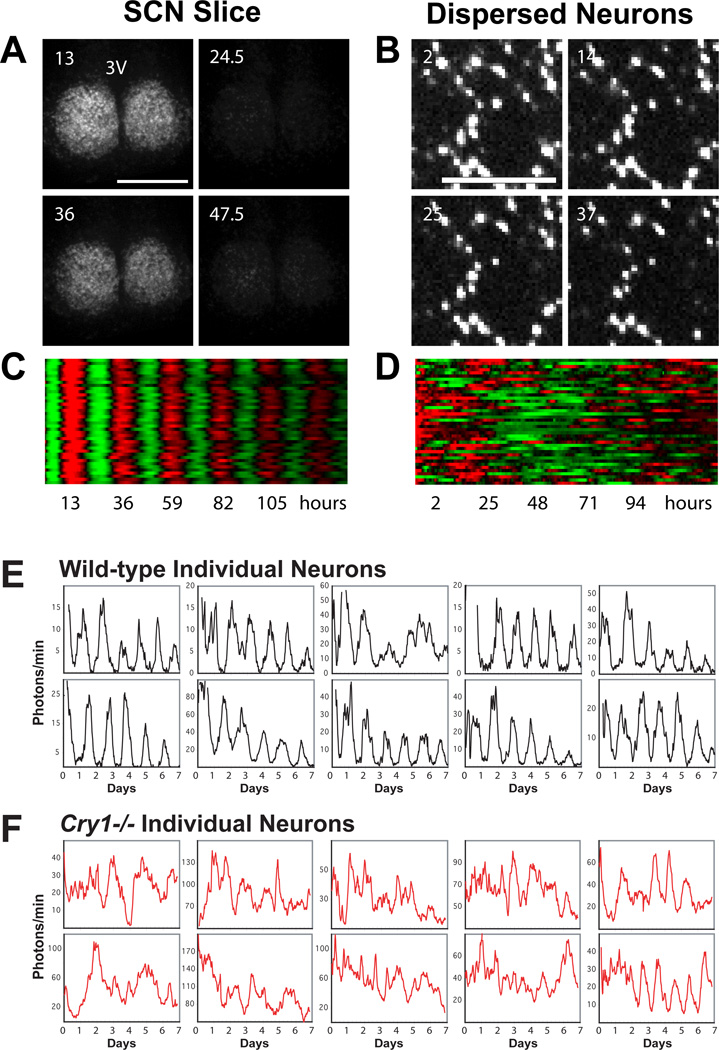Figure 2.
Network and autonomous properties of SCN neurons. Network properties of the SCN can compensate for genetic defects affecting rhythmicity at the cell autonomous level. A) Bioluminescence images of a Cry1−/− SCN in organotypic slice culture. Note the stable, synchronized oscillations. Numbers indicate hours after start of imaging; 3V indicates the 3rd ventricle. B) Bioluminescence images of dissociated individual Cry1−/− SCN neurons showing cell-autonomous, largely arrhythmic patterns of high bioluminescence intensity. C and D) Heatmap representations of bioluminescence intensity of individual Cry1−/− neurons in SCN slice (A) and dispersed culture (B). Values above and below the mean are shown in red and green, respectively, for 40 SCN neurons in each condition. E and F) Ten single SCN neuron rhythms from wild-type (E) and Cry1−/− (F) mice. Imaging began immediately following a media change at day 0. Dissociated Cry1−/− SCN neurons are largely arrhythmic, whereas dissociated wild-type cells are rhythmic. By contrast, in organotypic slice cultures, both wild-type and Cry1−/− SCN cells are robustly rhythmic and tightly synchronized. Figure and legend adapted and reprinted from (Liu et al 2007a), with permission from Elsevier.

